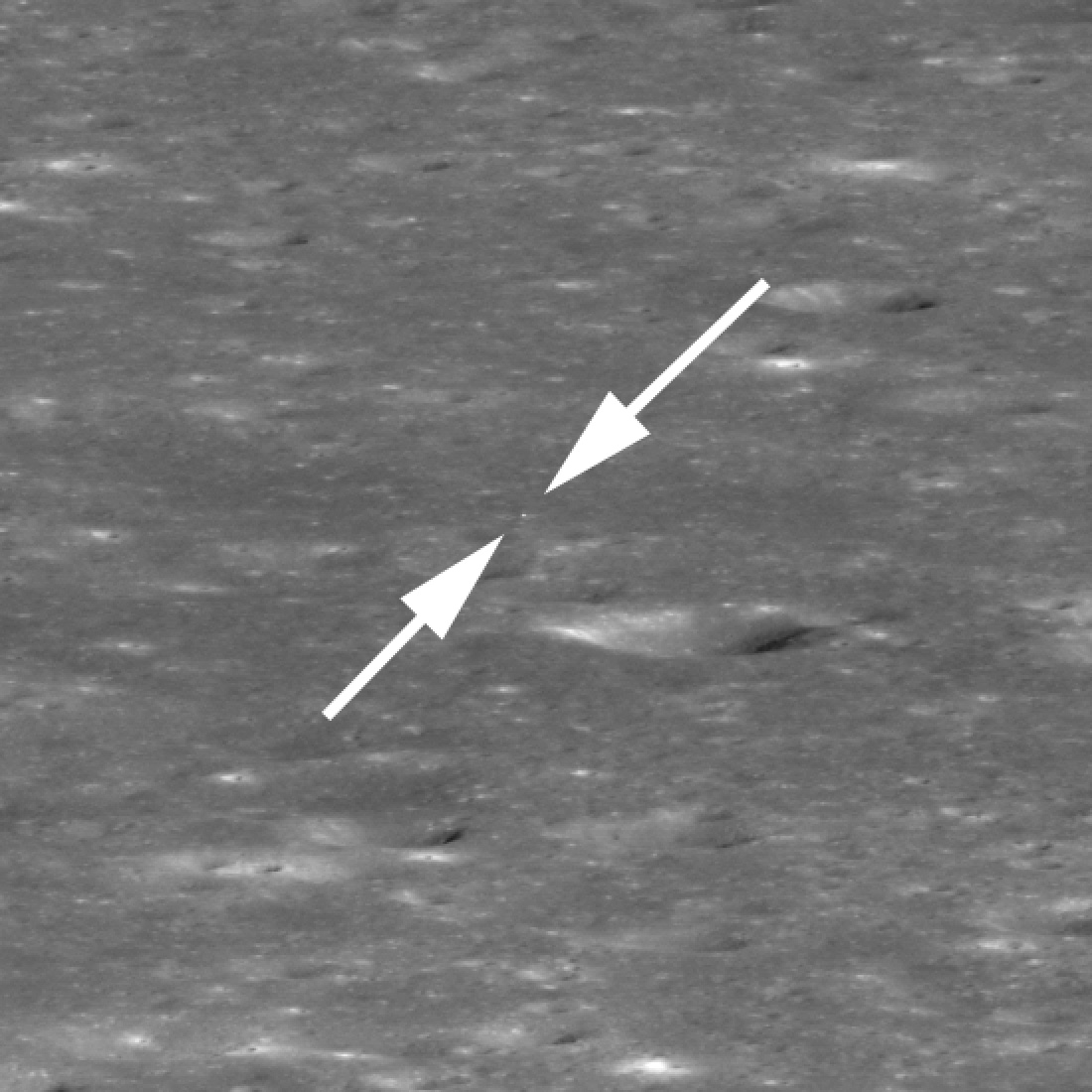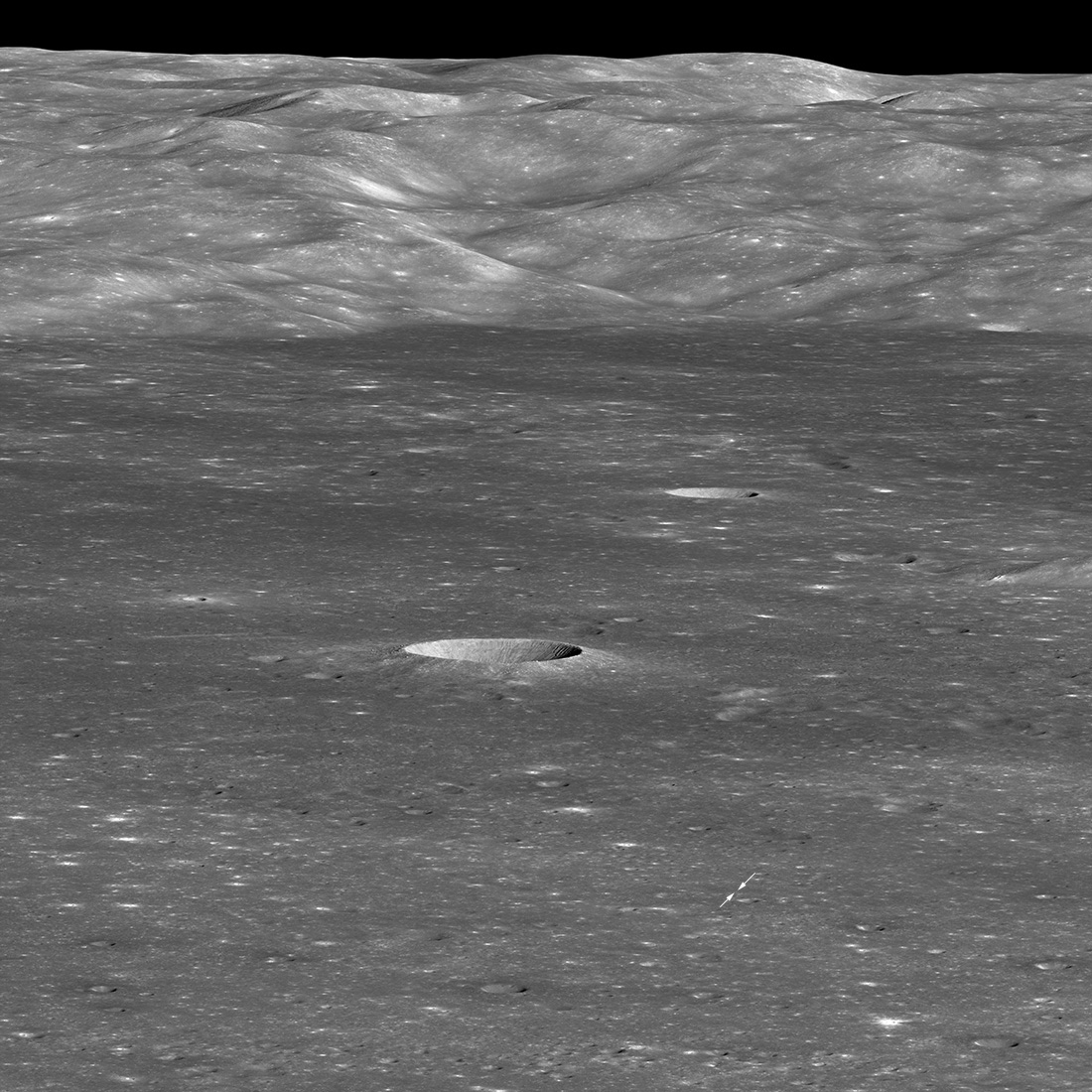
China's history-making Chang'e 4 mission has been spied by one of its robotic moon-studying brethren.
NASA's Lunar Reconnaissance Orbiter (LRO) recently caught a glinty glimpse of the Chang'e 4 lander, which on Jan. 2 became the first-ever spacecraft to make a soft touchdown on the moon's mysterious far side.
On Jan. 30, LRO rolled 70 degrees to the west as it approached Chang'e 4's landing site, the floor of the 115-mile-wide (186 kilometers) Von Kármán Crater. The maneuver brought the Chinese lander into view for LRO, though the mission's rover, named Yutu 2 ("Jade Rabbit 2"), escaped detection. [Photos from the Moon's Far Side! China's Chang'e 4 Lunar Landing in Pictures]
"Because LRO was 330 kilometers (205 miles) to the east of the landing site, the Chang'e 4 lander is only about two pixels across (bright spot between the two arrows), and the small rover is not detectable," LRO team members wrote in a description of the image, which was released today (Feb. 6).
"The massive mountain range in the background is the west wall of Von Kármán Crater, rising more than 3,000 meters (9,850 feet) above the floor," they added.
Get the Space.com Newsletter
Breaking space news, the latest updates on rocket launches, skywatching events and more!

The Chang'e 4 lander-rover duo carry a variety of scientific instruments, which they're using to characterize the surface and near-subsurface of Von Kármán Crater. (Yutu 2 rolled down twin ramps from atop the lander a few days after touchdown.)
The mission could help scientists understand why the moon's near and far sides are so different from each other, Chinese officials have said. For example, dark volcanic plains known as maria cover most of the near side but are rare on the far side.
The Chang'e 4 lander also totes a biological experiment, which contains fruit-fly eggs and seeds of a few plants, including cotton. The cotton seeds sprouted, becoming the first non-human organisms ever to live on the lunar surface (not counting the microbes that hitched a ride with NASA’s Apollo astronauts). The little plants froze to death soon thereafter, however.
And in case you were wondering: The moon has a far side and a near side because it's "tidally locked" to Earth, meaning it always shows the same face to our planet. (That would be the near side.)
LRO has been circling the moon since 2009. The spacecraft's high-resolution imagery assists a wide variety of scientific studies and also aids planning for future robotic and human missions to Earth's nearest neighbor, NASA officials have said.
Mike Wall's book about the search for alien life, "Out There," was published in November 2018 by Grand Central Publishing. Follow him on Twitter @michaeldwall. Follow us @Spacedotcom or Facebook.
Join our Space Forums to keep talking space on the latest missions, night sky and more! And if you have a news tip, correction or comment, let us know at: community@space.com.

Michael Wall is a Senior Space Writer with Space.com and joined the team in 2010. He primarily covers exoplanets, spaceflight and military space, but has been known to dabble in the space art beat. His book about the search for alien life, "Out There," was published on Nov. 13, 2018. Before becoming a science writer, Michael worked as a herpetologist and wildlife biologist. He has a Ph.D. in evolutionary biology from the University of Sydney, Australia, a bachelor's degree from the University of Arizona, and a graduate certificate in science writing from the University of California, Santa Cruz. To find out what his latest project is, you can follow Michael on Twitter.









